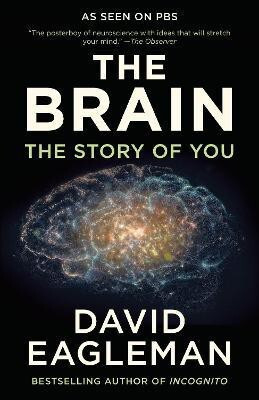
MySQL Workbench: Data Modeling and Development 1st Edition (English, Paperback, Michael McLaughlin)
Price: Not Available
Currently Unavailable
Highlights
- Language: English
- Binding: Paperback
- Publisher: McGraw Hill India
- ISBN: 9781259098307, 1259098303
- Edition: 1st Edition, 2013
- Pages: 480
Description
MySQL Workbench Data Modeling and Development helps developers learn how to effectively use this powerful product for database modeling, reverse engineering, and interaction with the database without writing SQL statements. MySQL Workbench is a graphical user interface that developers can use to create and maintain MySQL databases without coding. The book covers the interface and explains how to accomplish each step by illustrating best practices visually.
Clear examples, instructions, and explanations reveal, in a single volume, the black art of database modeling. This Oracle Press guide shows the developer how to get the tool to do what he or she wants. Annotated screen shots demonstrate all interactions with the tool and text to explain the how, what, and why of each step.
About the Author
Michael McLaughlin Oracle ACE, is a professor at BYU - Idaho in the Computer Information Technology Department of the Business and Communication School. He teaches courses on IT management, databases, and systems analysis and design. Michael is the author of Oracle Database 11g PL/SQL Programming, Oracle Database 10g Express Edition PHP Web Programming, and Oracle Database 11g & MySQL 5.6 Developer Handbook. He is the co-author of Oracle Database 11g PL/SQL Programming Workbook, Oracle Database 10g PL/SQL Programming, Expert Oracle PL/SQL, and Oracle Database AJAX & PHP Web Application Development. Michael worked at Oracle Corporation for more than eight years, most recently as the senior applications upgrade manger in E-Business Suite Release Engineering.
Table of Contents
Part 1: Configuration
Chapter 1: Installing and Configuring
Chapter 2: Creating and Managing Connections
Part 2: Data Modeling
Chapter 3: Data Modeling Concepts
Chapter 4: Creating an ERD
Chapter 5: Defining the Physical Schemata
Chapter 6: Creating and Managing Tables
Chapter 7: Creating and Managing Relationships
Chapter 8: Creating and Managing Views
Chapter 9: Creating and Managing Routines
Chapter 10: Creating and Managing Routine Groups
Chapter 11: Creating and Managing User & Groups
Chapter 12: Creating and Managing SQL Scripts
Chapter 13: Generating SQL Scripts
Chapter 14: Forward Engineering a Data Model
Chapter 15: Synchronize a Model with a Database
Chapter 16: Reverse Engineering a Database
Chapter 17: Managing Differences in the Data Catalog
Chapter 18: Creating and Managing Model Notes
Part 3: SQL Development
Chapter 19: Editing Table Data
Chapter 20: Editing Generated Scripts
Part 4: Server Administration
Chapter 21: Creating New Instances
Chapter 22: Managing Import and Export
Chapter 23: Managing Security
Chapter 24: Managing Server Instances
Clear examples, instructions, and explanations reveal, in a single volume, the black art of database modeling. This Oracle Press guide shows the developer how to get the tool to do what he or she wants. Annotated screen shots demonstrate all interactions with the tool and text to explain the how, what, and why of each step.
About the Author
Michael McLaughlin Oracle ACE, is a professor at BYU - Idaho in the Computer Information Technology Department of the Business and Communication School. He teaches courses on IT management, databases, and systems analysis and design. Michael is the author of Oracle Database 11g PL/SQL Programming, Oracle Database 10g Express Edition PHP Web Programming, and Oracle Database 11g & MySQL 5.6 Developer Handbook. He is the co-author of Oracle Database 11g PL/SQL Programming Workbook, Oracle Database 10g PL/SQL Programming, Expert Oracle PL/SQL, and Oracle Database AJAX & PHP Web Application Development. Michael worked at Oracle Corporation for more than eight years, most recently as the senior applications upgrade manger in E-Business Suite Release Engineering.
Table of Contents
Part 1: Configuration
Chapter 1: Installing and Configuring
Chapter 2: Creating and Managing Connections
Part 2: Data Modeling
Chapter 3: Data Modeling Concepts
Chapter 4: Creating an ERD
Chapter 5: Defining the Physical Schemata
Chapter 6: Creating and Managing Tables
Chapter 7: Creating and Managing Relationships
Chapter 8: Creating and Managing Views
Chapter 9: Creating and Managing Routines
Chapter 10: Creating and Managing Routine Groups
Chapter 11: Creating and Managing User & Groups
Chapter 12: Creating and Managing SQL Scripts
Chapter 13: Generating SQL Scripts
Chapter 14: Forward Engineering a Data Model
Chapter 15: Synchronize a Model with a Database
Chapter 16: Reverse Engineering a Database
Chapter 17: Managing Differences in the Data Catalog
Chapter 18: Creating and Managing Model Notes
Part 3: SQL Development
Chapter 19: Editing Table Data
Chapter 20: Editing Generated Scripts
Part 4: Server Administration
Chapter 21: Creating New Instances
Chapter 22: Managing Import and Export
Chapter 23: Managing Security
Chapter 24: Managing Server Instances
Read More
Specifications
Book Details
| Publication Year |
|
Contributors
| Author |
|
Be the first to ask about this product
Safe and Secure Payments.Easy returns.100% Authentic products.
Back to top




